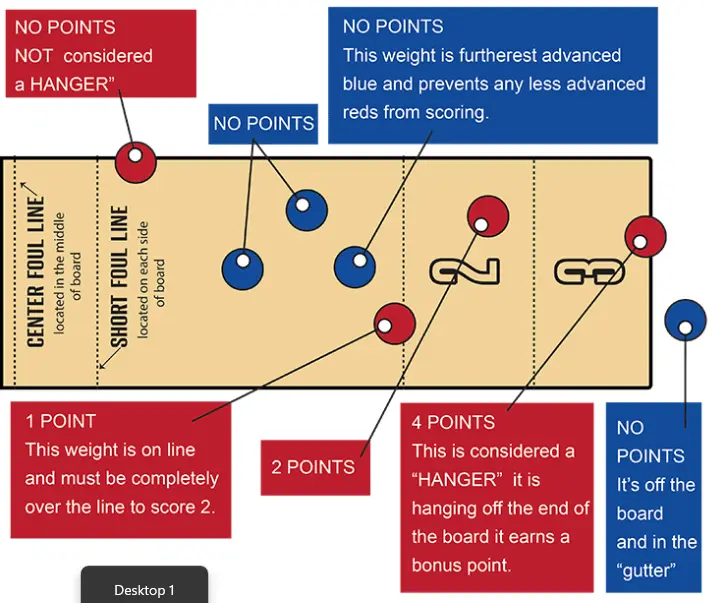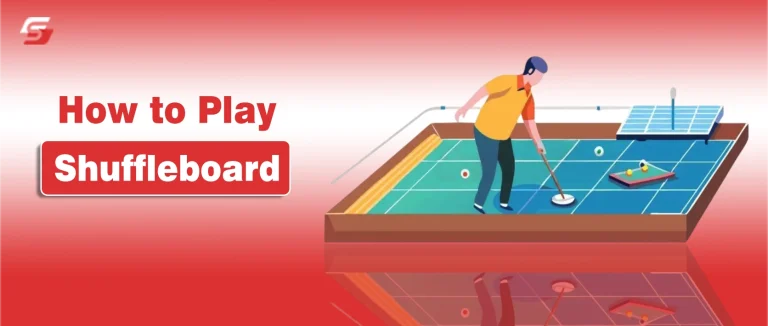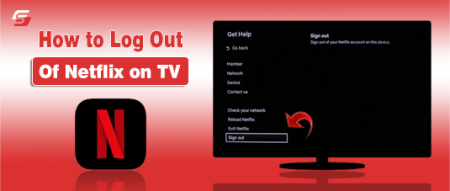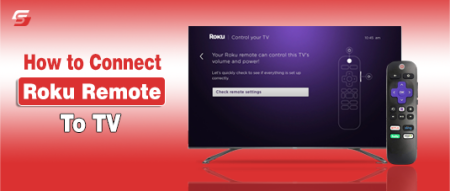Shuffleboard is a game where the player slides a puck down a smooth table or court to reach a scoring zone without falling off the edge. Anyone searching for how to play shuffleboard learns that the game starts when players decide who shoots first, and each player slides four pucks toward the far end to earn points based on final puck positions.
Shuffleboard scoring happens after all pucks are played, and the round winner is the player with the puck closest to the end in a valid scoring area.
This guide explains how to start a game, how to slide a puck, how scoring works, and how to finish a match so beginners understand how to play shuffleboard from the first round to the final point.
Equipment Needed to Play Shuffleboard
To play shuffleboard correctly, a player needs pucks, cues, a shuffleboard table or court, and shuffleboard wax because these items control puck movement and scoring. A player can also use a scoreboard, extra powder, and grip-friendly shoes to improve comfort and accuracy during the game.
Table vs. Court Setup Differences
| Feature | Table Shuffleboard | Court (Deck) Shuffleboard |
| Location | Indoor | Outdoor or deck area |
| Surface Material | Polished wood | Painted concrete/asphalt |
| Length | 9–22 feet | 39 feet |
| Playing Style | Hand-sliding pucks | Cue-pushed discs |
| Scoring Layout | Printed or engraved zones | Painted triangle scoring zone |
| Common Use | Bars, recreation rooms | Cruise ships, clubs, parks |
Choosing the Right Shuffleboard Surface and Dimensions
A shuffleboard surface should be smooth, durable, and moisture-resistant. Common options include:
- Maple or birch wood: Preferred for professional tables; offers hardness and consistent glide.
- Synthetic surfaces: Ideal for outdoor or casual play; provide weather resistance and low maintenance.
Recommended Dimensions:
- Tables: 9–22 ft long × 20 in wide × 30 in tall
- Courts: 39 ft long × 6 ft wide
Setting Up the Shuffleboard Table or Court
Proper shuffleboard setup ensures smooth gameplay, accurate puck glide, and balanced scoring conditions. Whether you’re assembling a table for indoor play or preparing an outdoor court, alignment, surface preparation, and equipment readiness are crucial for fair competition.
How to Apply Shuffleboard Wax or Powder
Shuffleboard wax (also called powder or sand) reduces surface friction and increases puck glide.
- Preparation: Ensure the surface is clean and dry before application.
- Application: Evenly sprinkle wax from one end of the table to the other in a thin, uniform layer.
- Distribution: Use your hand or a soft cloth to spread it lightly without pressing. Excess powder should be brushed away to avoid buildup.
- Frequency: Reapply wax after every few rounds of play to maintain consistent puck speed and control.
For outdoor deck shuffleboard, powdered wax is replaced by light silicone spray or a fine grit coating suitable for concrete surfaces.
Preparing Pucks and Cues for Gameplay
Shuffleboard pucks and cues must be properly maintained before play to ensure accuracy and comfort.
- Clean the Pucks: Wipe each puck with a dry, lint-free cloth to remove dust and old wax residue.
- Check Puck Condition: Inspect for chips or dents; damaged pucks cause irregular slides.
- Apply Light Waxing: Rub a small amount of shuffleboard wax on puck bottoms for smoother glide.
- Inspect Cues: Ensure cue heads are firmly attached and handles are straight. Bent or loose cues reduce accuracy during shots.
- Well-maintained pucks and cues improve precision, reduce friction variation, and enhance overall gameplay consistency.
If you enjoy games that bring people together, you’ll also love learning how to play Secret Santa, a fun and festive way to surprise friends during the holidays.
Basic Rules and Scoring System For Shuffleboard
The shuffleboard rules define how players alternate turns, earn points, and handle fouls during gameplay. Understanding these fundamentals ensures fair play and consistent scoring on both table and deck shuffleboard.
The objective is to slide pucks into scoring zones while preventing opponents from achieving higher points. Each round combines strategy, precision, and placement to determine the winner based on total accumulated scores.

Overview of Shuffleboard Rules for Beginners
Shuffleboard gameplay begins with two players or teams taking turns sliding pucks toward a scoring zone. Each player has four pucks, distinguished by color. The match is divided into frames or rounds, and the player with the puck closest to the scoring area’s far end earns the most points for that round.
Key beginner rules include:
- The puck must be completely past the foul line to count as valid.
- Players alternate shots until all pucks have been played.
- Only one player or team scores per round — the one with the highest-scoring puck.
- The game continues until a player reaches the agreed target score, usually 15 or 21 points.
How Turns, Rounds, and Scoring Zones Work
Turns alternate between players, with each attempting to outscore or knock opponents’ pucks off the board. The round ends when all pucks are played.
In table shuffleboard, the surface features numbered scoring zones — typically 1, 2, and 3 points from nearest to farthest. A puck earns points only if it lies entirely within a scoring zone and does not touch any line.
In deck shuffleboard, scoring triangles mark zones from 1 to 10 points, with a penalty zone labeled “10 OFF.”
Scoring zone layout comparison:
| Feature | Table Shuffleboard | Deck Shuffleboard |
| Zone Values | 1–3 points | 1–10 points |
| Zone Shape | Rectangular divisions | Triangle scoring grid |
| Line Rules | Must not touch boundary | Touching line reduces value |
| Round End | All pucks played | All discs played |
Correct zone understanding helps players target high-value areas while avoiding fouls.
Scoring Examples and Point Calculation
Scoring in shuffleboard depends on puck position after all pucks stop sliding.
- If one player’s puck is closest to the far edge in the 3-point zone, that player scores 3 points for that puck.
- If multiple pucks from the same player lie in scoring zones ahead of any opponent puck, all are counted.
- Example:
- Player A has pucks in zones 3 and 2; Player B’s closest puck is in zone 1 → Player A scores 5 total points (3 + 2).
- If a puck touches a dividing line, it counts for the lower value zone.
In tournament settings, referees or digital sensors verify final puck placement to ensure scoring accuracy.
Common Penalties and Variations (Table vs. Deck Shuffleboard)
Penalties in shuffleboard maintain fair play and protect equipment integrity.
- Foot Foul: Occurs when a player crosses the shooting area line before releasing the puck, results in loss of turn.
- Illegal Shot: Puck launched above board surface or pushed sideways, counted as void.
- Out-of-Turn Play: If a player shoots out of sequence, that shot is canceled and removed from play.
Game Variations:
- Table Shuffleboard: Often played to 15 or 21 points; uses smaller pucks and faster play.
- Deck Shuffleboard: Usually played to 50 or 75 points; includes “10 OFF” penalties and larger courts.
Each version maintains the same core objective, to outscore the opponent by precise placement, but differs in court design, scoring zones, and match length.
Step-by-Step | How to Play Shuffleboard
Learning how to play shuffleboard involves understanding the sequence of play, from determining who starts to sliding pucks accurately and calculating scores.
The process follows a structured order where players alternate turns, aim for scoring zones, and total points at the end of each round. Whether playing on a table or deck, following the correct steps ensures fairness, consistency, and enjoyable gameplay for beginners and experienced players alike.
Objective of the Game
The objective of shuffleboard is to slide pucks into designated scoring zones while preventing opponents from doing the same. Each player or team uses a set of colored pucks to compete for the highest total score.
The player whose puck finishes closest to the far end of the board, without falling off, earns the most points. Accuracy, distance control, and strategic blocking determine success across multiple rounds until a target score, usually 15, 21, or 50 points, is reached depending on the game version.
How to Start: Deciding Who Goes First (Lagging)
The starting order in shuffleboard is decided through a method called lagging.
- Lagging requires each player to slide one puck toward the far edge of the board without it falling off.
- The puck that stops closest to the edge, without crossing it, wins the lag.
- The player who wins the lag decides whether to shoot first or second in the opening round.
This process ensures an impartial start and allows both players to demonstrate control before formal play begins.
How to Slide or Shoot a Puck
Sliding a shuffleboard puck requires balance, accuracy, and smooth motion.
- Grip the Puck: Hold the puck lightly with the thumb and fingers, keeping the hand relaxed for a controlled release.
- Position the Body: Stand with feet shoulder-width apart and body aligned toward the target zone.
- Aim and Focus: Visualize the intended landing area and angle before sliding.
- Release the Puck: Push the puck smoothly with steady force, not a jerk, allowing it to glide over the waxed surface.
- Follow Through: Maintain arm motion after release to guide the puck’s direction.
In table shuffleboard, players use their hands, while in deck shuffleboard, cues are used to push discs. The goal is to control both distance and direction while avoiding knocking pucks off the scoring area unnecessarily.
How Scoring Happens After Each Round
Scoring in shuffleboard occurs after all pucks from both players have been played in a round.
- Only one player or team scores per round, the one with the puck closest to the far edge of the board.
- Points are awarded for all pucks from that player that lie ahead of the opponent’s nearest puck.
- A puck earns the value of the zone where it completely rests without touching boundary lines.
- For example: If Player A’s two pucks are in zones worth 3 and 2 points, and Player B’s closest puck is behind both, Player A scores 5 total points for the round.
The round ends when all pucks stop moving, and the next round begins from the opposite end of the board or court.
Ending the Game and Determining the Winner
Game completion occurs when a player reaches or exceeds the pre-agreed target score.
- In casual games, the target is often 15 or 21 points fortable shuffleboard and 50 or 75 points for deck shuffleboard.
- Once a player meets the target, that player wins the match immediately, even if the opponent has remaining pucks.
- In tournament play, games may include multiple rounds or best-of-series formats to determine final standings.
- If the game ends in a tie, players continue with additional rounds until one achieves a lead of at least one full scoring zone.
The player with the highest cumulative score at the end of play is declared the winner.
Final Thoughts
Learning how to play shuffleboard is all about combining a bit of skill, patience, and friendly competition. Once you understand the basic setup, scoring, and shooting technique, the game becomes both relaxing and addictive.
With regular practice and a few strategy tweaks, you’ll soon learn how to control speed, protect your points, and outscore your opponent. So, gather your friends, wax the table, and enjoy the satisfying sound of a perfect glide.
Shuffleboard isn’t just a game, it’s a mix of strategy, rhythm, and fun that keeps you coming back for another round. Want to explore more interactive and skill-based games? Check out how to play Roblox online and dive into thousands of creative virtual worlds designed for all ages.
FAQs About How to Play Shuffleboard
The main goal in shuffleboard is to slide your puck closest to the scoring zones while preventing your opponent from doing the same.
Most shuffleboard games are played to 15 or 21 points, depending on the rules agreed upon before starting.
Players decide who goes first by lagging, each slides a puck, and the one closest to the far edge without falling off starts.
If a puck slides off the table, it is considered out of play and scores no points for that round.
Only the player with the puck closest to the far edge scores points, based on which scoring zone their puck rests in.











